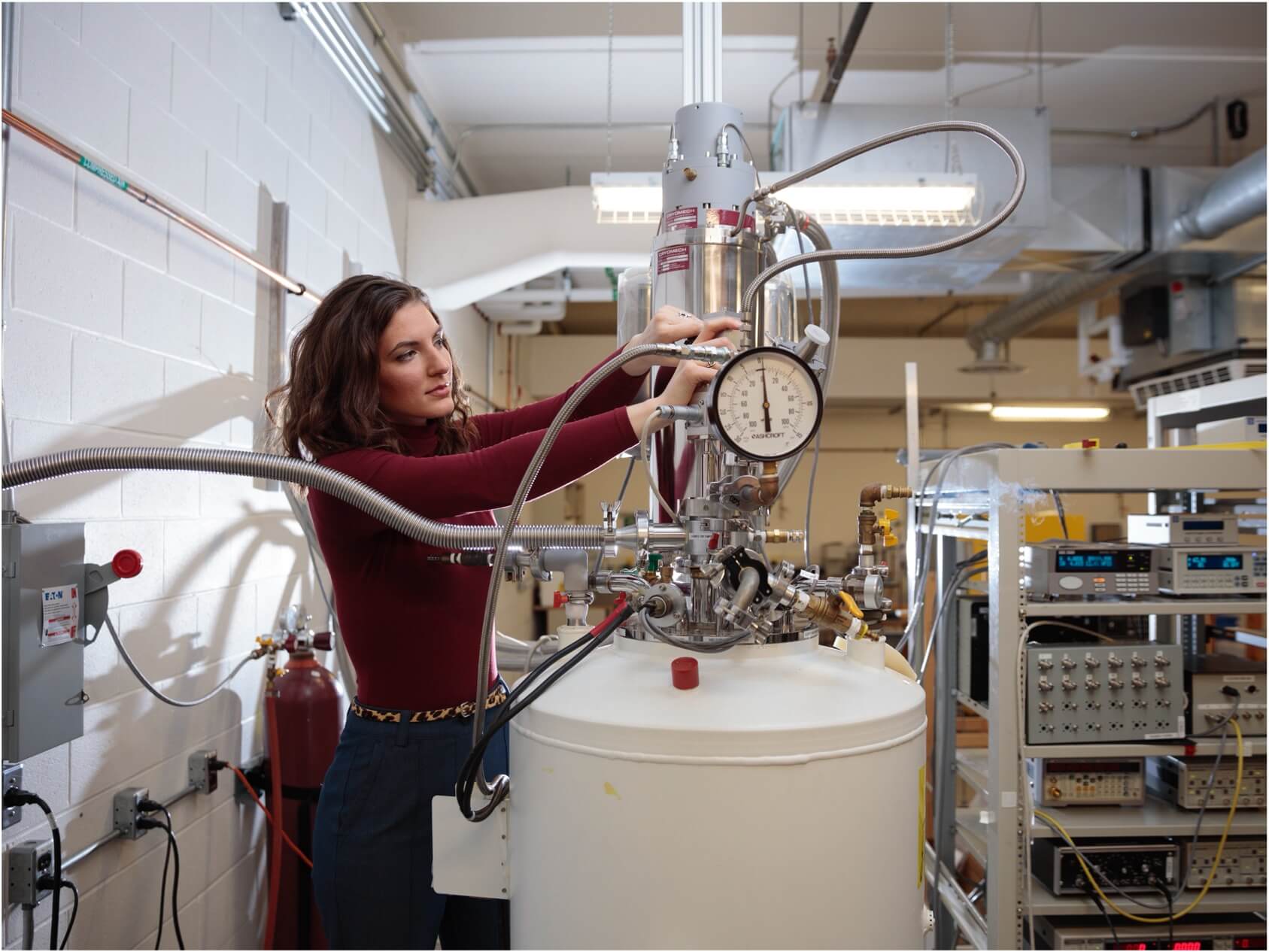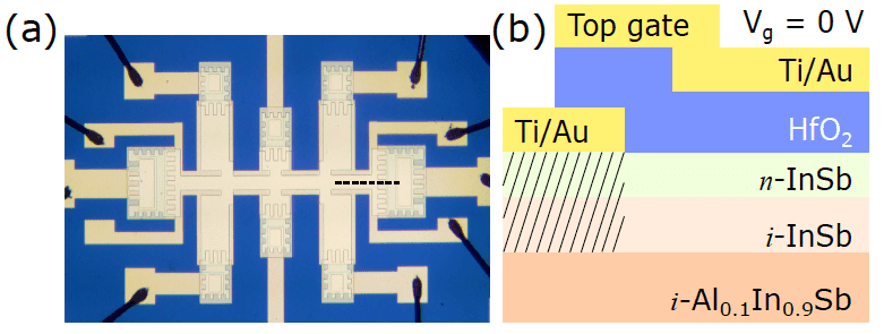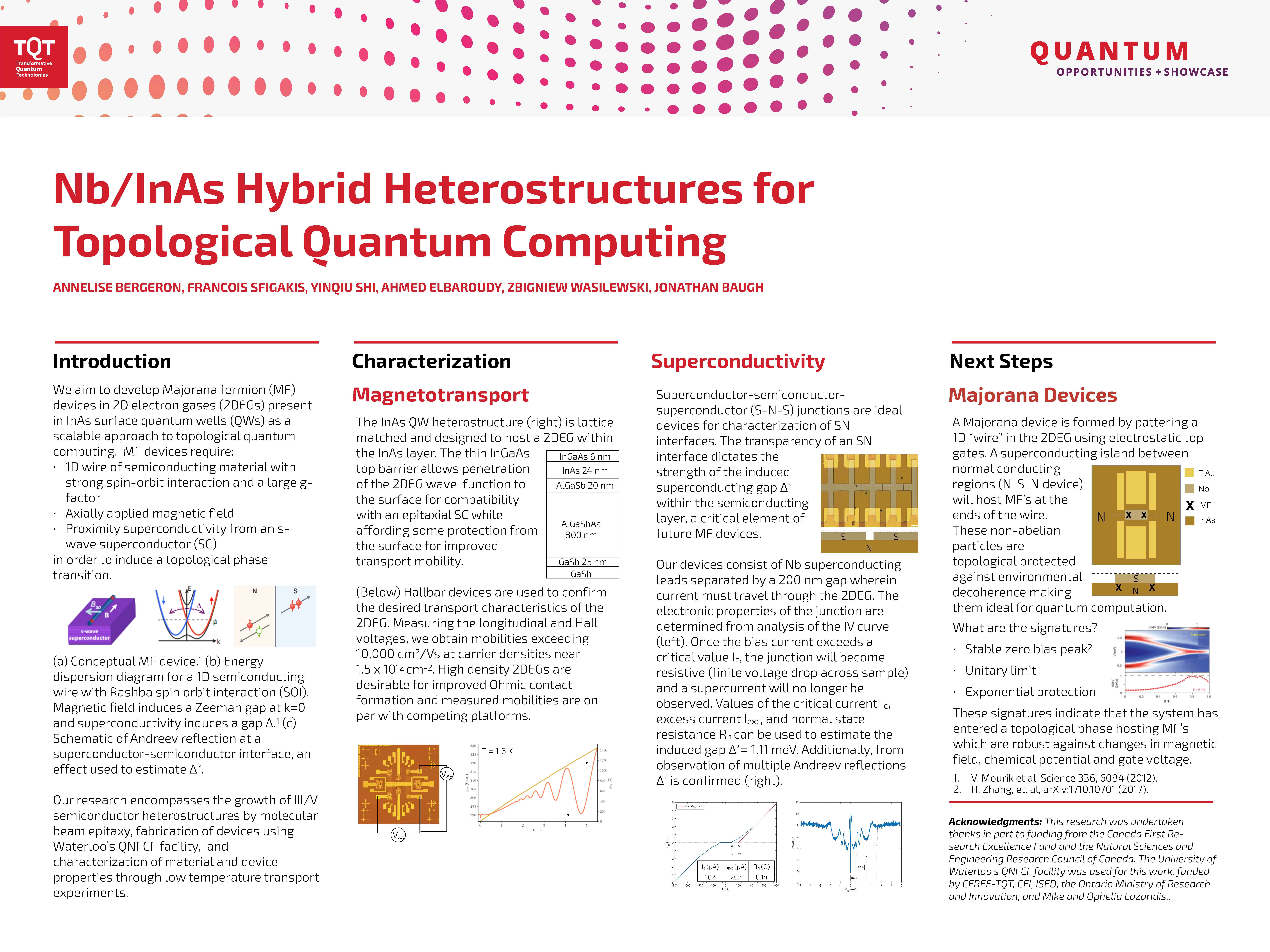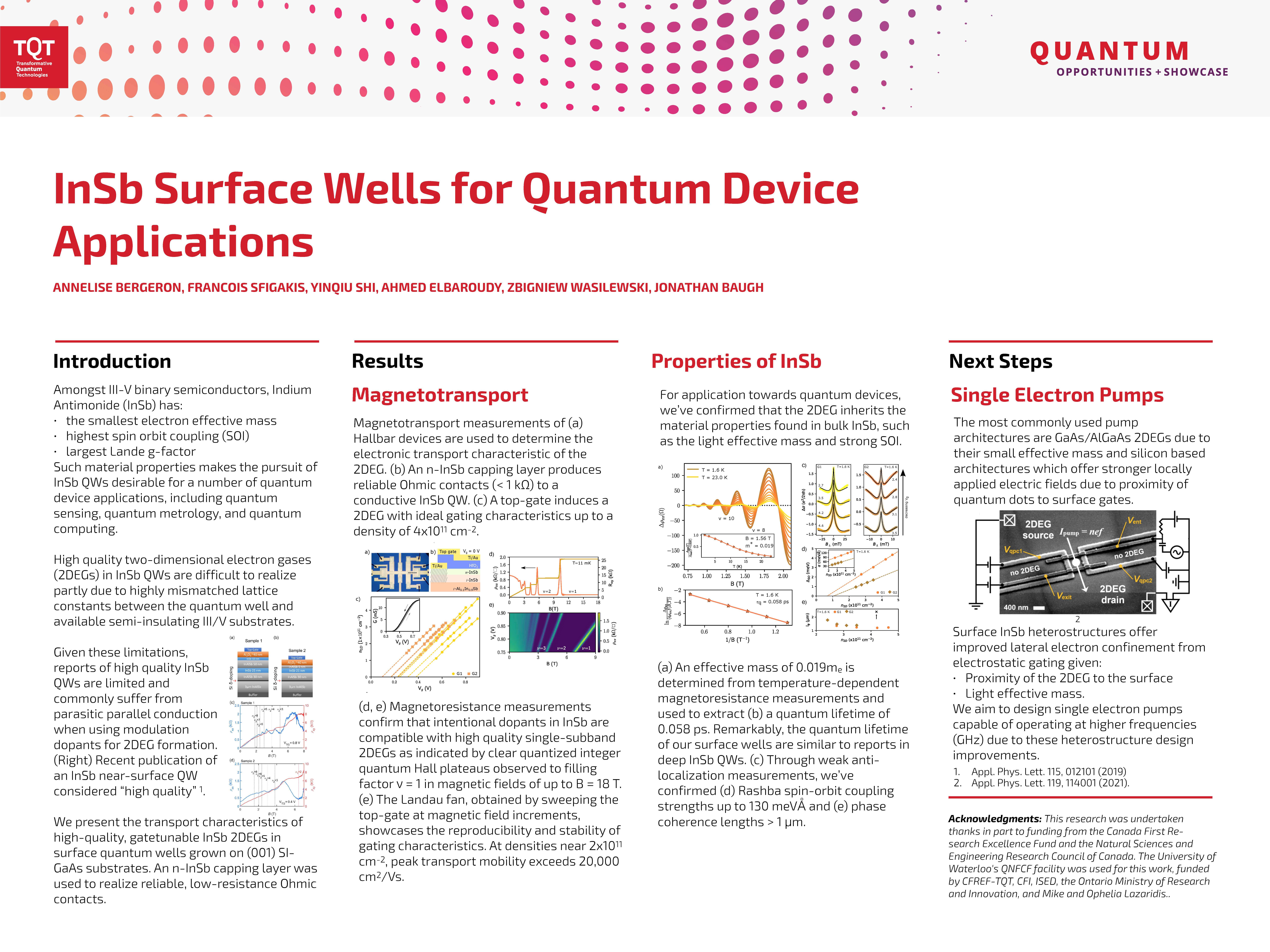The promise of two-dimensional electron gases in quantum wells for wide-ranging quantum devices
Two-dimensional electron gases in quantum wells are a powerful resource for several quantum technology applications, including quantum sensing, metrology, and topological quantum computing.
In a conventional quantum computer, information is localized within a single particle (or qubit). Noise that affects that qubit can cause quantum information to get scrambled and lost. For fault-tolerant quantum computing, quantum error correction must be incorporated with a high level of redundancy – the system must be built with tens of thousands of physical qubits to encode just a small number of logical qubits. This inhibits scaling to a large-scale computer. Alternatively, researchers have considered storing information in topological qubits, such as Majorana Fermions (MFs). “With topological qubits, the information is effectively spread over many particles through entanglement, and the information is encoded in their topology. Thus, it is inherently protected against noise, as local perturbations won’t affect the collective state. If this can be implemented in reality, a quantum computer can be built with far fewer physical qubits and less error correction,” says Dr. Jonathan Baugh, Professor in the Department of Chemistry and the Institute of Quantum Computing (IQC).
To create these MFs, Baugh uses two-dimensional electron gases in quantum wells. A two-dimensional electron gas (2DEG) is a uniform sheet of electrons with a thickness of only a few nanometers. Until now, engineering high-quality 2DEGs has only been reliable for certain semiconductors that don’t have ideal properties for topological qubits. Baugh decided to explore indium antimonide (InSb) and indium arsenide (InAs) semiconductors as candidates for these platforms since their low bandgaps, high spin-orbit coupling and large g-factor yield the necessary properties for realizing Majorana physics, an essential step towards noise-protected quantum computation.
2DEGs hosted at or near the surface of semiconductor structures provide an enhanced ability to shape electrostatically-defined nanoscale devices. When layers of semiconductor materials are sandwiched together, the electrons in the 2DEG are confined to a thin layer but are free to move within the 2D plane of that layer. This confining layer is the quantum well (QW). When further paired with superconductors, these systems offer ideal platforms for building hybrid devices for quantum applications. “Having a 2DEG at the surface enables many types of quantum devices. It allows semiconductor-superconductor hybrid devices, where electrons display properties from both types of materials”, says Dr. Francois Sfigakis, research assistant professor at IQC. One example of these hybrid devices is topological quantum computers.

These semiconductor-superconductor QW hybrid devices are theoretically predicted to form MFs. InAs is a suitable semiconductor to develop these platforms due to its properties and ease of growth. Led by Ph.D. student E. Annelise Bergeron, the research team grew, fabricated, and characterized Niobium (Nb) InAs heterostructures. Dr. Zbig Wasilewski, a professor in the Department of Electrical and Computer Engineering and the Waterloo Institute for Nanotechnology, used methods from his TQT-supported research to help grow the heterostructures via molecular beam epitaxy. Low-temperature magneto-transport experiments were conducted to characterize the material and device properties. The InAs 2DEGs in surface QWs showed the desired transport characteristics, with good electron mobilities and induced superconductivity due to the Nb contacts.
In contrast to InAs, InSB QWs are more challenging to develop; growth typically leads to a high density of structural defects, and there are issues with parasitic parallel conduction and unstable carrier densities, which negatively affect device operation. For the first time, Baugh and Wasilewski successfully realized InSb 2DEGs in surface QWs. The devices displayed high-quality, reproducible, and stable transport characteristics without parallel conduction. In addition, the researchers demonstrated that the 2DEGs inherit the material properties found in bulk InSb, thus validating the use of these InSb surface QWs for applications toward quantum devices. Future studies of devices based on these 2DEG QWs will allow researchers to observe specific signatures that confirm the system has entered a topological phase hosting MFs.

(a) Optical image of a gated Hall bar fabricated on the InSb surface quantum well. A global top-gate overlaps the Ohmic contacts in order to induce a 2DEG between contacts. (b) Schematic of the device cross-section along the dotted line in (a). Metal contacts are Ti/Au, the dielectric insulator is HfO2, and n-InSb indicates donor dopants within the top 5 nm of the InSb quantum well.
Another application the researchers hope to explore with these new platforms is single-electron pumps. “Single-electron pumps are primarily used in metrology to define the unit of current. Although there is a definition of the Ampère, a practical definition of the nano-ampère is lacking and is technologically important, as more and more devices use smaller currents. We also propose using single-electron pumps to generate single photons, an important goal in quantum photonics with wide-ranging applications,” says Sfigakis. Given the small effective mass and the proximity of the 2DEG to the surface, the developed heterostructures offer improved electron confinement, allowing single-electron pumps to operate at higher frequencies.
Baugh hopes to extend this work toward a range of quantum technologies. “These semiconductor platforms have a wide range of applications, from building quantum computers to quantum simulators and quantum sensing devices. In addition, the physics is very rich and complex – combining semiconductors and superconductors can lead to applications beyond what has already been imagined.”
This research was undertaken thanks in part to funding from the Canada First Research Excellence Fund.
_____________________________________________________________________________________________________________________________________
 Poster: Nb/InAs Hybrid Heterostructures for Topological Quantum Computing
Poster: Nb/InAs Hybrid Heterostructures for Topological Quantum Computing
Poster authors: Annelise Bergeron, Francois Sfigakis, Yinqiu Shi, Ahmed Elbaroudy, Zbigniew Wasilewski, Jonathan Baugh

Poster: InSb Surface Wells for Quantum Device Applications
Poster authors: Annelise Bergeron, Francois Sfigakis, Yinqiu Shi, Ahmed Elbaroudy, Zbigniew Wasilewski, Jonathan Baugh
